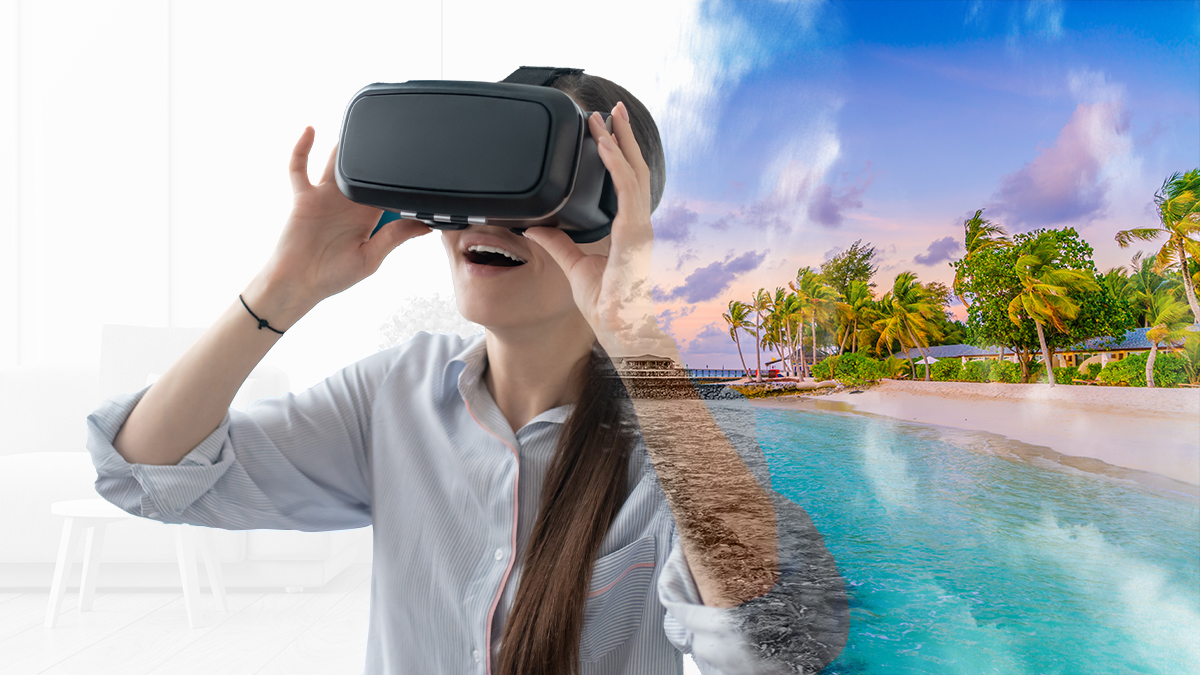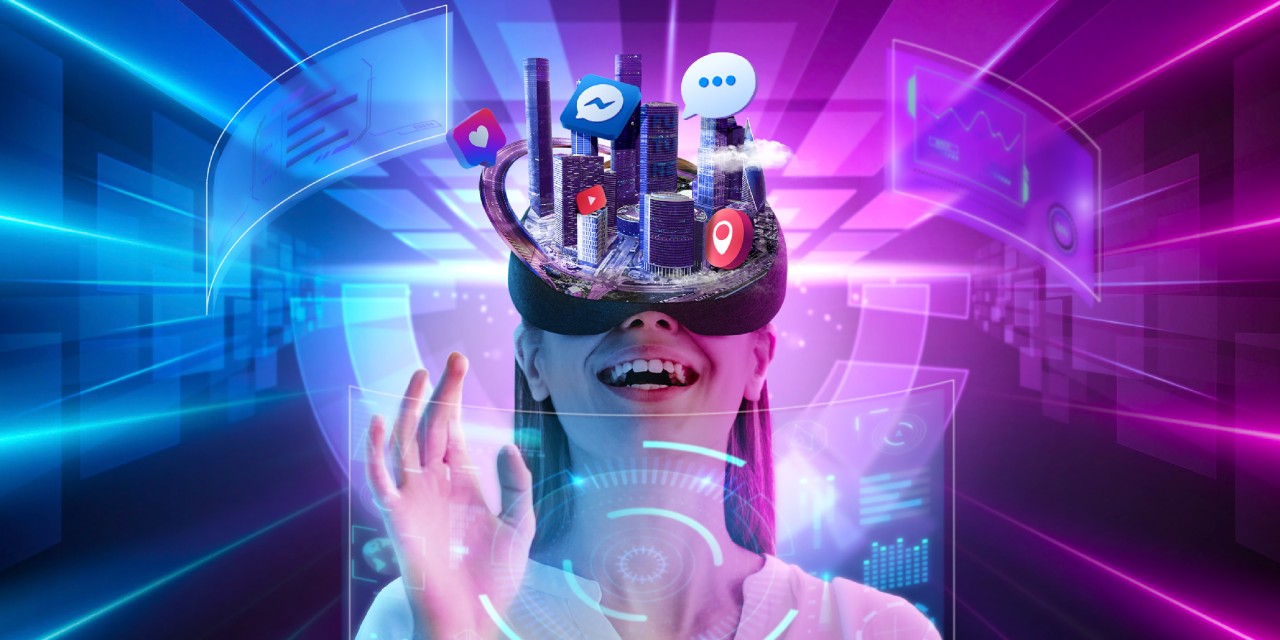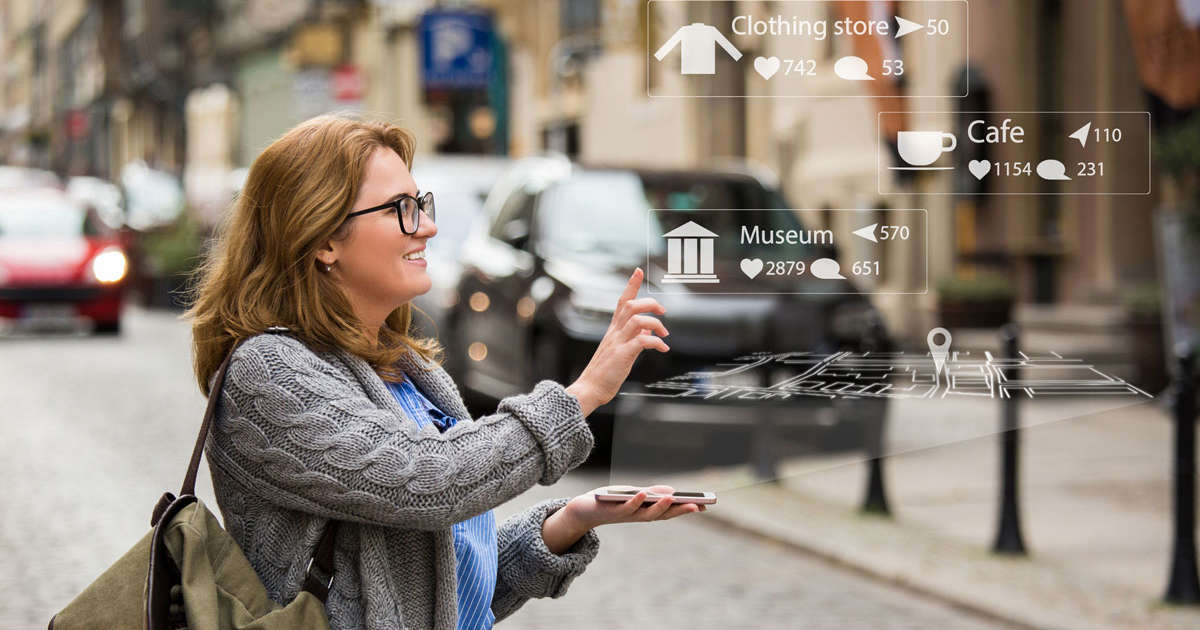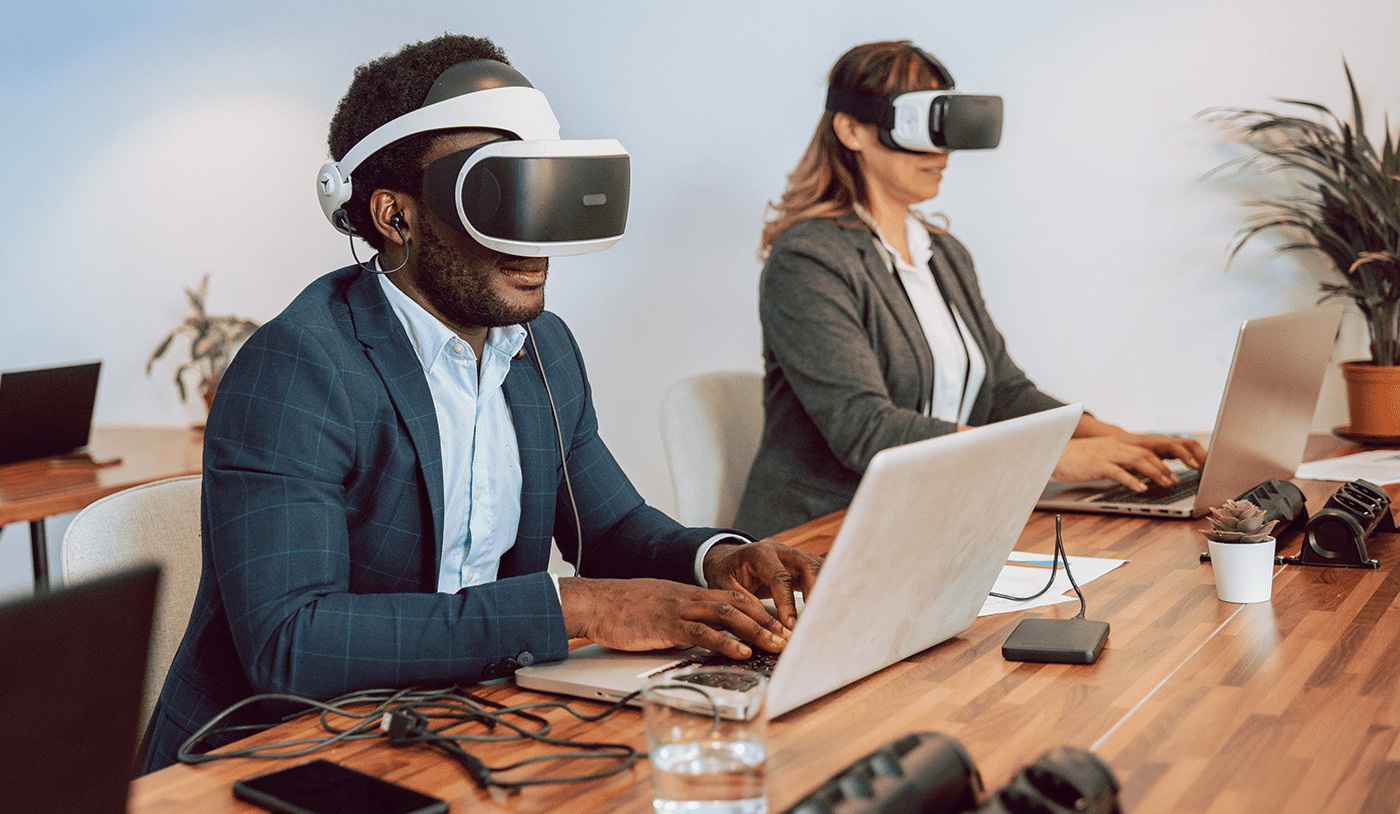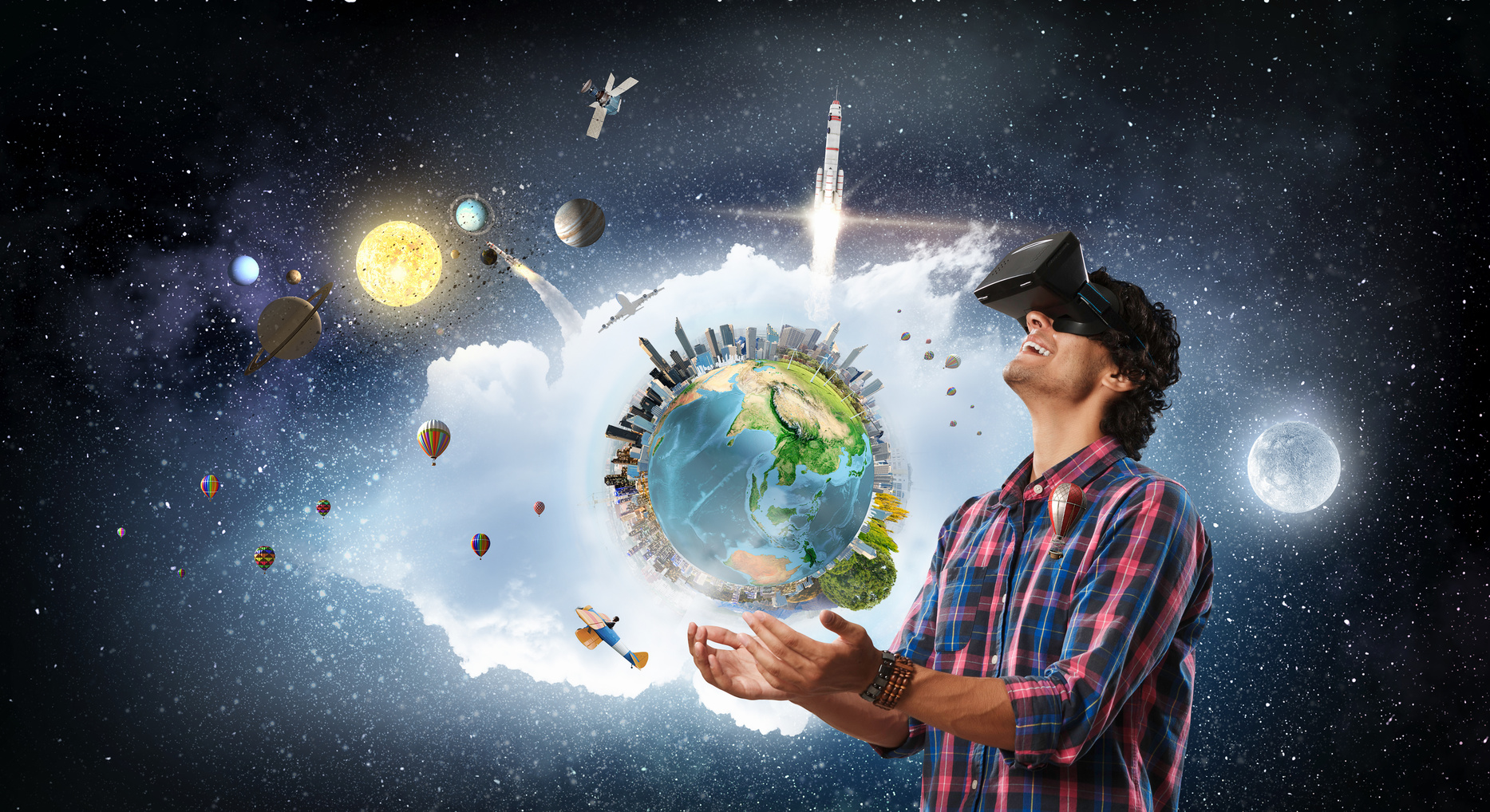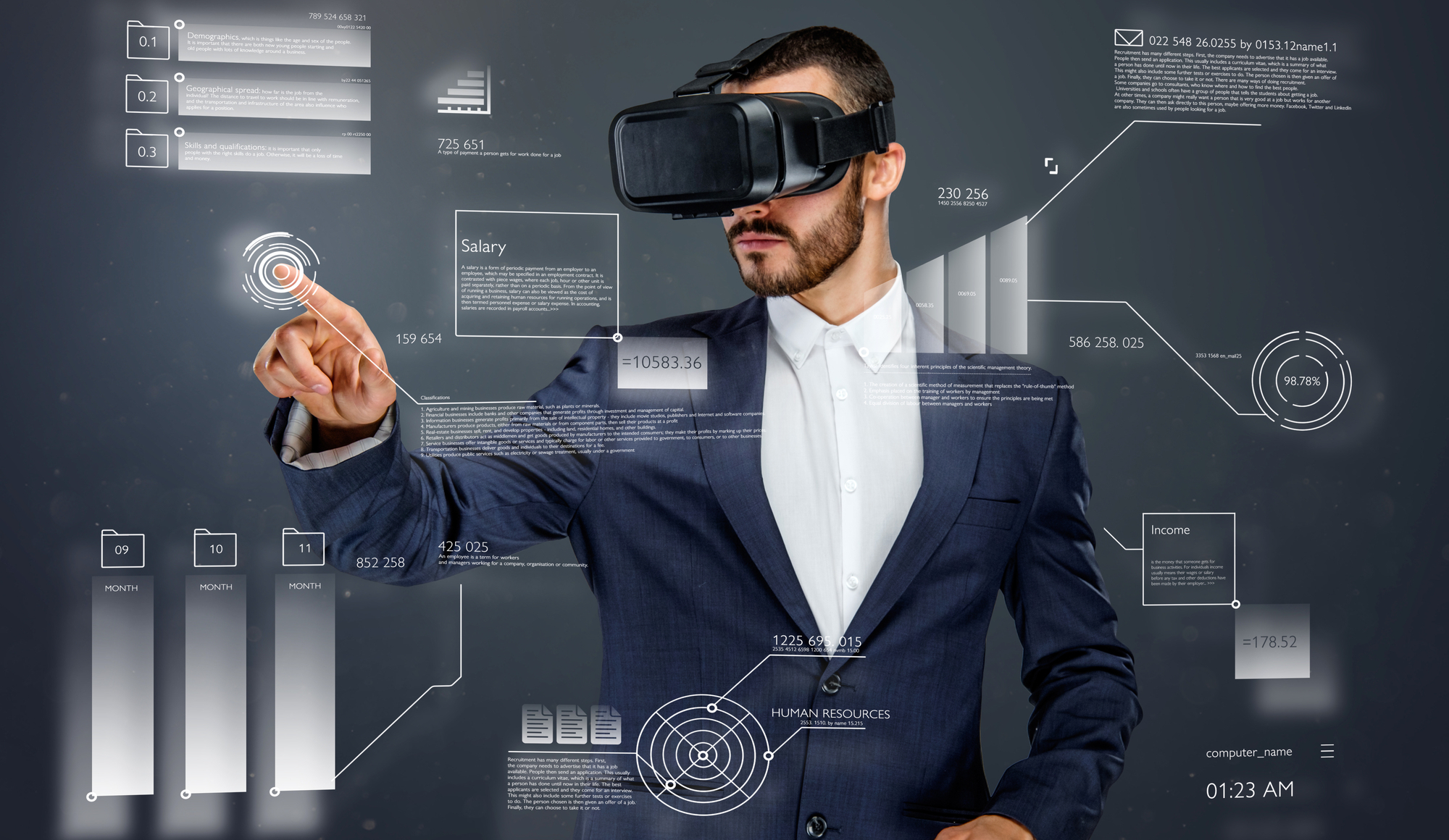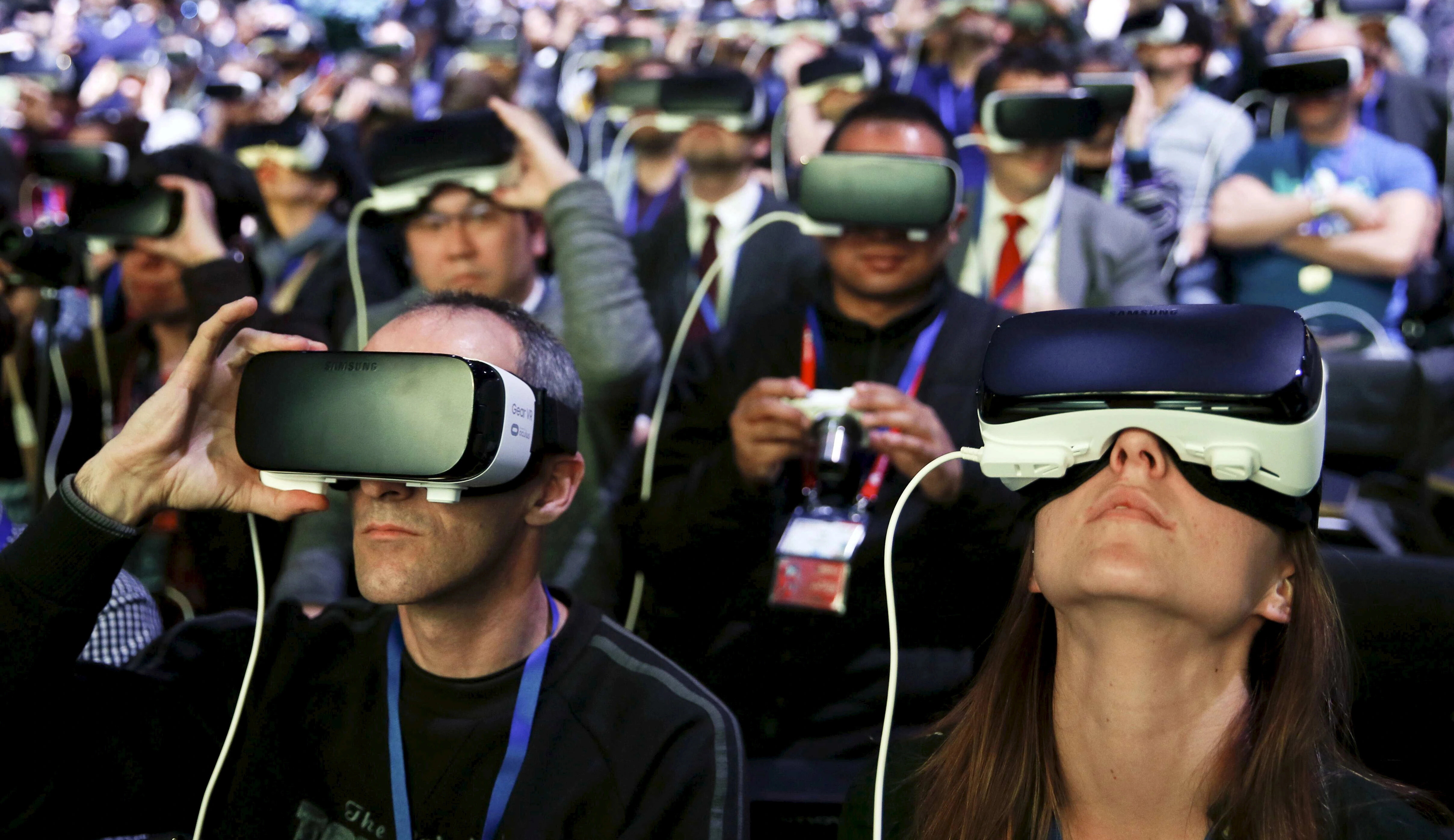Introduction
The travel and tourism industry is constantly evolving, adapting to the changing needs and expectations of consumers. With advancements in technology, businesses in this sector are finding innovative ways to engage customers and enhance their overall experience. One such technology that has gained significant attention is Virtual Reality (VR). VR has the potential to revolutionize the way travel and tourism companies operate, by immersing customers in a virtual world where they can explore destinations, experience activities, and make informed decisions.
Virtual Reality refers to a computer-generated simulation of a three-dimensional environment that can be interacted with using specialized equipment such as VR headsets. Through this technology, users have a lifelike, immersive experience that transports them to different places without physically being there. This opens up a world of possibilities for travel and tourism companies to engage with their target audience in a more impactful and memorable way.
In this article, we will explore the various ways in which a travel and tourism company can utilize Virtual Reality to enhance their business. From the booking process to destination exploration, marketing and advertising, customer experience, and employee education, VR offers a wide range of benefits that can give businesses a competitive edge in the industry.
What is Virtual Reality (VR)?
Virtual Reality (VR) is a technology that uses computer-generated imagery and sensory experiences to create a simulated environment that immerses users in a digital world. Through the use of VR headsets or other devices, users can interact with and explore these virtual environments as if they were physically present.
VR technology typically involves the use of a headset that covers the user’s eyes, creating a stereoscopic 3D display. This display provides a sense of depth and perspective, making the virtual environment appear realistic. In addition to visual immersion, VR can also incorporate other sensory stimuli such as sound, touch, and even smell, further enhancing the user’s sense of presence within the virtual world.
The technology behind VR relies on computer graphics and powerful processors to generate the virtual environments in real-time. This allows users to move and interact within the virtual space, providing a fully immersive and interactive experience. Various input devices, such as handheld controllers or motion tracking sensors, enable users to manipulate objects or navigate through the virtual environment.
The applications of VR extend beyond gaming and entertainment. In recent years, industries like healthcare, education, architecture, and of course, travel and tourism, have begun to explore the potential of VR. By immersing users in virtual locations, VR technology has the ability to transport them to different places, providing a unique and engaging way to experience and interact with the world around them.
Virtual Reality has the power to revolutionize the way we perceive, explore, and interact with our surroundings. It opens up endless possibilities for businesses in the travel and tourism industry, enabling them to offer immersive experiences that go beyond traditional marketing and promotional efforts.
Benefits of Virtual Reality in the Travel and Tourism Industry
Virtual Reality (VR) offers numerous benefits to the travel and tourism industry, transforming the way companies engage with customers and enhancing the overall travel experience. Here are some key advantages of incorporating VR technology:
- Enhanced Visualization: VR allows potential travelers to virtually explore destinations, hotels, and attractions before making a booking. They can get a realistic sense of the location’s ambiance, layout, and amenities, helping them make informed decisions.
- Immersive Destination Experience: With VR, travelers can experience a virtual tour of a destination, immersing themselves in its sights, sounds, and culture. This immersive experience triggers emotions and sparks wanderlust, enticing travelers to visit in person.
- Time and Cost Savings: Virtual tours can save time and money for travelers, reducing the need for physical visits to multiple locations. They can explore numerous destinations in the same sitting, aiding in itinerary planning.
- Accessibility: VR technology enables people with physical limitations or disabilities to experience destinations that may otherwise be challenging to visit. It promotes inclusivity in the travel industry and allows individuals to explore a world of possibilities.
- Personalized Travel Experiences: VR can be used to create custom travel experiences based on individual preferences. Travel companies can tailor virtual experiences by incorporating specific interests, activities, or attractions to cater to each customer’s unique tastes.
- Real-time Updates and Feedback: Travel companies can use VR to provide real-time updates on flight information, weather conditions, and travel advisories. VR can also allow travelers to provide feedback on virtual experiences, aiding in service improvements.
- Marketing and Advertising: VR offers a powerful marketing tool for travel companies. Immersive virtual experiences can be shared on websites, social media platforms, and VR showcases, attracting potential customers and generating interest in destinations.
The use of VR technology in the travel and tourism industry has the potential to revolutionize how people explore and plan their trips. It provides an innovative and engaging way to showcase destinations, create personalized experiences, and market travel services, ultimately enhancing the overall travel experience for customers.
Enhancing the Booking Process with VR
The booking process is a crucial step in the travel and tourism industry. Virtual Reality (VR) can greatly enhance this process, providing customers with a more immersive and informative experience as they make their travel arrangements.
With VR, travel companies can create virtual tours of hotels, resorts, and accommodations that potential guests can explore from the comfort of their own homes. VR technology allows users to navigate through rooms, view amenities, and get a realistic sense of the ambiance and layout. This immersive experience enables customers to make more informed decisions about their accommodations, leading to increased satisfaction and reduced booking cancellations or surprises upon arrival.
In addition to virtual tours of accommodations, VR can also be used to showcase popular attractions and destinations. By providing virtual experiences in these locations, travelers can get a taste of what to expect during their trip. They can explore iconic landmarks, experience local culture, and even simulate activities like hiking, diving, or sightseeing. This not only helps customers choose their desired destinations but also builds excitement and anticipation for their upcoming trip.
Moreover, VR can offer a seamless and streamlined booking process. Through VR technology, users can view pricing options, availability, and make bookings directly within the virtual environment. This eliminates the need to switch between multiple websites or platforms, making the booking process more convenient and efficient for customers.
Virtual Reality can also address common concerns or uncertainties that customers may have when booking their trips. For example, some travelers may have difficulty visualizing the layout of a cruise ship or understanding the cabin configurations. VR can provide virtual tours of cruise ships, enabling customers to explore different decks, cabins, and amenities, helping them make more informed decisions.
Overall, VR enhances the booking process by providing customers with a more immersive, informative, and convenient experience. It allows them to explore accommodations, destinations, and activities in a virtual environment, increasing confidence and satisfaction in their travel choices. Incorporating VR technology into the booking process can significantly improve customer engagement and ultimately drive bookings for travel and tourism companies.
Virtual Reality for Destination Exploration and Planning
Virtual Reality (VR) has transformed the way travelers explore and plan their trips. It offers a unique and immersive experience that allows individuals to virtually visit destinations, experience attractions, and make informed decisions about their travel plans.
One of the key benefits of VR for destination exploration is the ability to transport users to different locations without leaving their homes. Through VR headsets or devices, users can virtually visit a wide range of destinations, experiencing their beauty, culture, and unique attractions. They can explore famous landmarks, stroll through bustling streets, and even interact with virtual locals, creating a sense of presence and helping them gauge their interest in a particular destination.
This virtual exploration is not limited to static images or videos. With VR, users can engage in interactive experiences that simulate real-world activities. They can take virtual tours of museums, go on guided city walks, or even participate in virtual adventure activities such as skydiving or scuba diving. This immersive experience not only helps users get a better understanding of a destination’s offerings but also ignites their excitement and desire to visit in person.
Furthermore, VR greatly aids in the planning phase of a trip. Users can utilize VR technology to create personalized itineraries by virtually exploring different attractions, accommodations, and transportation options. They can assess the proximity of attractions to each other, examine hotel rooms for suitability, and even experiment with different routes and modes of transportation. This level of interactivity and customization ensures that travelers have a well-informed and tailored plan for their trip.
Virtual Reality also enables collaboration among travelers, as they can share their virtual experiences and discuss their preferences and suggestions. This enhances the group decision-making process and fosters a sense of excitement and anticipation among travel companions.
Moreover, VR can help travelers overcome language barriers by providing virtual language translation and cultural immersion experiences. Users can learn common phrases in the local language, understand cultural customs, and gain insights that can enhance their interactions and experiences during their trip.
By utilizing VR for destination exploration and planning, travelers can make more informed decisions, have a better understanding of their chosen destinations, and create personalized itineraries based on their interests and preferences. It revolutionizes the travel planning process, making it more immersive, interactive, and enjoyable.
Improving Marketing and Advertising through VR
Virtual Reality (VR) has emerged as a powerful tool for marketing and advertising in the travel and tourism industry. It offers a unique and immersive way to engage potential customers, showcase destinations and experiences, and create lasting impressions. Here are some key ways in which VR can improve marketing and advertising efforts:
1. Virtual Tours and Experiences: VR allows travel companies to provide virtual tours of destinations, accommodations, and attractions. Potential customers can experience the sights, sounds, and atmosphere of a place, sparking their wanderlust and driving their desire to visit in person. This immersive experience helps create a memorable connection with the brand and increases the chances of converting leads into bookings.
2. Destination Marketing: VR technology enables destinations to create virtual experiences that highlight their unique offerings. From showcasing iconic landmarks to promoting local cuisine and cultural activities, VR can immerse potential travelers in the destination and give them a taste of what they can expect. This compelling marketing approach sets destinations apart and helps them stand out in a crowded tourism market.
3. Interactive Content: VR allows for the creation of interactive and engaging content that goes beyond traditional marketing methods. Companies can develop VR experiences that encourage users to actively participate, such as virtual treasure hunts, escape rooms, or interactive storytelling. This level of interactivity fosters a deeper connection with the brand and leaves a lasting impression on potential customers.
4. Virtual Events and Trade Shows: VR can revolutionize the way travel companies participate in events and trade shows. Instead of traditional booth setups, companies can create immersive virtual experiences that enable attendees to virtually explore destinations, interact with exhibitors, and attend virtual presentations. This expands the reach of the company’s marketing efforts and allows for a wider audience engagement.
5. Social Media and Viral Marketing: VR experiences are highly shareable, making them ideal for viral marketing campaigns. Users can share their virtual experiences on social media platforms, generating word-of-mouth marketing and expanding the reach of the brand. This user-generated content acts as a powerful endorsement, increasing brand visibility and attracting new customers.
6. Personalized Marketing: VR technology allows for personalized marketing experiences. Companies can create customized VR content that caters to specific customer segments or target markets. By tailoring virtual experiences to individual preferences, companies can deliver highly relevant and targeted marketing messages, enhancing the overall effectiveness of their campaigns.
Virtual Reality revolutionizes marketing and advertising in the travel and tourism industry by providing immersive and interactive experiences that captivate potential customers. It allows companies to showcase their offerings in a memorable and engaging way, encouraging travelers to choose their brand and ultimately increasing bookings and revenue.
Enhancing Customer Experience with Virtual Reality
Virtual Reality (VR) has the potential to transform the customer experience in the travel and tourism industry. It offers a range of opportunities to engage and delight customers, creating immersive and unforgettable experiences. Here are some ways VR can enhance the customer experience:
1. Virtual Experiences: VR enables customers to virtually experience destinations, accommodations, and attractions before making a booking. They can explore the sights and sounds of a place, get a sense of the ambiance, and even participate in virtual activities. This virtual experience allows customers to make more informed decisions, ensuring that their expectations align with the actual experience.
2. Personalized Recommendations: VR can be used to provide personalized recommendations based on customer preferences. By analyzing customer data and combining it with VR technology, companies can curate tailored suggestions, such as personalized itineraries, attractions, or restaurants, based on individual interests and preferences. This customization enhances the customer experience and fosters a sense of exclusivity.
3. Pre-trip Preparation: VR can assist customers in preparing for their trips by providing virtual training or familiarization experiences. This includes learning basic language phrases, understanding local customs and etiquette, or even experiencing virtual simulations of transportation and security procedures. This pre-trip preparation enhances customer confidence and reduces anxiety, leading to a smoother travel experience.
4. Virtual Concierge Services: VR can act as a virtual concierge, providing real-time assistance and guidance to customers throughout their trip. Through VR headsets or mobile applications, customers can access virtual concierge services that offer recommendations, directions, and information about nearby attractions, restaurants, or events. This personalized and interactive support enhances the customer experience and adds a touch of convenience.
5. On-site Virtual Experiences: Once customers are on their trip, VR can enhance their experiences by providing on-site virtual experiences. For example, at a historical site, customers can use VR to virtually explore the site’s past, visualizing its former glory through 3D reconstructions and immersive storytelling. This adds depth and context to the visit, enriching the customer’s understanding and appreciation of the destination.
6. Virtual Souvenirs: VR can offer customers the opportunity to capture and preserve their travel memories in a unique way. By recording their VR experiences or creating personalized VR postcards, customers can relive their travel moments long after they return home. These virtual souvenirs provide a lasting reminder of their trip and add an extra layer of emotional connection to the overall experience.
Virtual Reality has the potential to enhance the customer experience in the travel and tourism industry by providing immersive, personalized, and interactive experiences. By incorporating VR into various touchpoints throughout the customer journey, companies can create unforgettable moments for their customers, fostering loyalty and positive brand associations.
Virtual Reality for Travel Agent Training and Employee Education
The implementation of Virtual Reality (VR) technology in the travel and tourism industry goes beyond customer experiences. VR also offers significant benefits in training travel agents and educating employees to enhance their knowledge and skills. Here’s how VR can be used for travel agent training and employee education:
1. Immersive Training Simulations: VR enables travel agents to engage in virtual simulations that replicate real-life scenarios. By navigating through various mock customer interactions, travel agents can practice their communication, problem-solving, and sales skills in a controlled and immersive environment. This hands-on training experience helps build confidence and prepares agents for real-world situations.
2. Product Familiarization: VR allows travel agents to gain a deeper understanding and familiarity with destinations, accommodations, and attractions. Through virtual tours and experiences, agents can explore various products, giving them the knowledge and confidence to recommend the most suitable options to customers. This comprehensive product knowledge enhances the quality of service provided by travel agents.
3. Language and Cultural Training: VR can support language learning and cultural training for travel agents. Agents can virtually immerse themselves in different language scenarios, practice common phrases, and simulate cultural interactions. This training enhances agents’ ability to communicate effectively with customers from diverse backgrounds and ensures cultural sensitivity.
4. Virtual Sales Presentations: VR technology allows travel companies to create interactive and visually appealing sales presentations. These presentations can showcase destination highlights, hotel features, and unique experiences, providing agents with immersive materials to engage and convince potential customers. This dynamic sales tool improves agents’ ability to promote and sell travel packages to customers.
5. Continuing Education and Updates: VR offers a flexible and efficient way to provide ongoing education and updates to travel agents and employees. Virtual training modules can be created to deliver updates on new destinations, travel regulations, or company policies. This ensures that agents stay informed and up to date with the latest industry trends and developments.
6. Collaboration and Team Building: VR can facilitate collaboration and team-building activities among travel agents and employees. Virtual team-building exercises, interactive workshops, or virtual meetings can be conducted, regardless of geographical locations. This promotes a sense of teamwork, strengthens relationships, and improves communication skills among employees.
Virtual Reality provides a dynamic and innovative platform for travel agent training and employee education. By leveraging VR technology, travel companies can enhance the knowledge, skills, and overall performance of their agents and employees, fostering a more proficient and customer-focused workforce.
Conclusion
Virtual Reality (VR) has emerged as a powerful tool in the travel and tourism industry, revolutionizing the way companies interact with customers, market their offerings, and enhance the overall travel experience. From enhancing the booking process to providing virtual destination exploration, VR offers a wide range of benefits that can give businesses a competitive edge.
The immersive and interactive nature of VR allows potential travelers to virtually explore destinations, accommodations, and attractions, providing them with a realistic sense of the ambiance and helping them make informed decisions. VR also offers personalized recommendations, streamlines the booking process, and even provides virtual concierge services, ensuring a smooth and enjoyable travel experience.
Additionally, VR has the potential to transform marketing and advertising efforts by providing virtual tours, interactive content, and personalized experiences. This technology creates memorable connections with potential customers, increases brand visibility, and generates interest in destinations and travel services.
Moreover, VR has proven to be invaluable in training travel agents and educating employees. It provides immersive training simulations, facilitates product familiarization, and enhances language and cultural understanding. VR also enables ongoing education and updates, ensuring that travel agents and employees stay up to date with the latest industry trends and developments.
In conclusion, Virtual Reality has the power to reshape the travel and tourism industry. It offers exciting opportunities for businesses to engage customers, improve marketing efforts, and deliver personalized and immersive experiences. By harnessing the potential of VR, travel companies can stay at the forefront of innovation and provide exceptional customer experiences that will driveloyalty and success in this constantly evolving industry.







